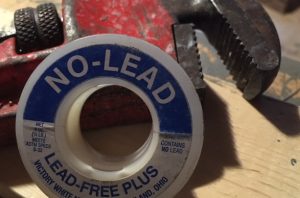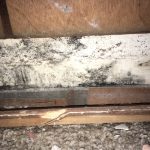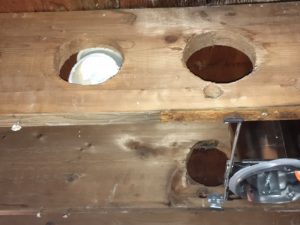Getting A Renovation Started
When you start a renovation there’s plenty to consider. There’s lots to think about other than the dangers. You know what they are – colors, designs, costs, time lines and the like. But before you charge ahead too quickly, answer this: “Are you really ready for whatever your renovation brings?” Each reno is unique, but surprises and dangers are often quietly hidden, just waiting to be awakened by that first hammer swing.
In short, renovation is hardly child’s play. The unseen potential issues need more preparation than is put into the final design considerations. So before you get ahead of yourself, prepare for the worst just in case! This list of dangers and renovation surprises is not meant to scare, but rather to help you prepare! So hang on and scan the list of some of the dangers…
- -Asbestos
- – Lead paint
- – lead solder
- – Lack of fire caulking gaps
- – Careless or unqualified plumbers cutting supporting joists
- – removal of load bearing walls
- – Old wiring (knob and tube)
- – mold
- – concrete dust mix/cutting
- – non tempered glass in older homes
- – post tension slab
- – VOC’s , and other lung irritants
- – sketchy contractors
- – rodent droppings
YES! You made it through and are still reading. GOOD JOB! If you haven’t yet canceled your renovation after reading that list, then it’s likely that your are serious about preparing for your renovation. So let’s break down that list and see what you need to know so you aren’t taken by surprise. Knowledge is powerful in helping hurdle surprises toward a successful renovation and a must to keep your family healthy and happy.
ENVIRONMENTAL CONCERNS
ASBESTOS
I’m sure you’ve seen the commercials on TV talking about the mesothelioma litigation avenues for victims and their families who were unaware of the dangers of asbestos decades ago. Asbestos is without a doubt a deadly product. Though it was banned in different countries in the 2nd half of the 20th century, the United States has been slow to act. The result is that asbestos products may have found a home in your home. Depending on the age of your home, you may or may not have the following products that could have asbestos in it:
- Plaster
- Mud and texture coats
- Vinyl floor tiles, sheeting, adhesives
- Roofing tars, felts, siding, and shingles[54]
- Siding, countertops, and pipes
- Popcorn ceilings, also known as acoustic ceilings
- Caulk
- HVAC flexible duct connectors
ARE YOU REALLY THINKING ABOUT DOING A HOME RENOVATION PROJECT?
So what is a homeowner considering a renovation to do? FIRST, do your own research. What does your proposed renovation entail? What will be removed? How old is your house? What specific products were used at the time it was built. These are all good questions to ask BEFORE the dust starts flying. Maybe getting those proposed renovation areas tested is good for piece of mind. Supposedly, asbestos is less a worry if undisturbed. Could that asbestos siding be covered with new siding? Or does it need to be professionally remediated. Does that floor tile have to be broken up, or can a floating wood floor be laid over it? In short, there are existing solutions. But knowing what to look for and what to ask is a great place to start
LEAD
Lead was an additive in paint and banned in the USA in 1978. Little children are especially susceptible because lead paint tastes sweet. And when a little toddlers mouth finds a window sill you have a recipe for disaster. It’s a good plan to test pre-1978 homes specifically for lead paint.

Test kits are readily available and with a simple swab of the suspected paint, you can know quickly if you have a lead paint hazard. If so, the typical remedy is encapsulation. In simple terms, that means paint over it. Remember, one of the worst things you can do to lead paint is turn it into a breathable dust by sanding it. NEVER sand it.
There is one more lead concern worth mentioning. Lead was used in plumbing until 1986, when the EPA banned it. The solder was used to join copper pipes and fixtures for water supply of a house. As was said before, if you have concerns, you can also have your water tested for lead. Adding a lead filter to your drinking water supply or several other options are easy solutions and worth tacking on to your renovation budget.
MOLD
Have you every seen black (or other murky colored) spots in a neglected bathroom wall?

Sometimes removing a wall unveils an ugly patch of furry mold growing as the result of an unseen leak. Mold typically shows up where it can get a reliable water supply. If you see it – do not disturb it! As a matter of fact, leave the room and close the door.
Mold spores can have serious health consequences and are yet another substance best left to the trained professionals to remediate. Mold remediation is a non-negotiable. If it is found during a renovation, it should not be ignored.
CONCRETE, MORTAR or TILE MASTIC DUST
If you saw attacks on the Twin Towers in New York City on that fateful 9-11 morning, you can’t forget the billowing clouds of grey and white dust that enveloped people in the streets as the buildings collapsed. That dust was concrete dust – or silica – which plagued the victims and the rescuers with deadly results. Some died soon after. Some died years later. Silicosis is an irreversible lung disease which resulted from inhaling that cloud.
Anytime tiles are being laid or some concrete work is done, the likelihood of dust is high. Bagged concrete needs to be mixed with water. Yet that process can release a lot of dust. Without a respirator, that powdery dust that can be a serious hazard to your lungs. One consideration during a home renovation is what precautions are taken to ensure that the living environment is sealed from work areas during the renovation. Special attention needs to be paid to the HVAC system too. Remember that the air returns, all that duct work in your house, are linked together with the air supply. The air in your house is continuously recycled. The last thing any homeowner would want is silica dust spread throughout the house due to thoughtless mixing practices or inadequate separation of the work area from the rest of the house.
VOC’s and OTHER LUNG IRRITANTS
The Bad News:
In 2015 Lumber Liquidators was exposed in a 60-Minutes story which stated that some of its Chinese-made laminate flooring had formaldehyde levels that were “off the charts” compared to what the State of California legally allowed. That is just one high profile story. You have likely sniffed out VOC offenders. If it smells “new”, you are probably smelling VOC’s (or volatile organic compounds).
I remember a couple years ago doing a project for someone who wanted a product applied over wallpaper so that it could be painted over rather than removed. It was called GARDZ. It was like a clear paint that formed a hard paintable surface over intact wallpaper. What was unforgettable was the ridiculously powerful smell of this product. I had to wear a respirator to apply the product and then had to leave the house as it dried. I think there may have been just a few VOC’s in that can!!! But that product is not alone.
They are found, or smelled, in new carpet (through off-gassing), released by some paints, and yes, let’s not forget the formaldehyde laced flooring. These are just a few significant barriers to the air quality for a healthy home renovation. They are everywhere. Even in toys! Items which are glued together, especially like all the particles of wood in particle board, from which much furniture is made today, also emit VOC’s.
The Good News:
There is much good news nonetheless! You may not yet be able to avoid all VOC’s, but you can make a pretty big dent. If you have painted a room in the past year, you may have inadvertently pulled a not-so-smelly can of paint off the shelf. That’s because the public outcry against the VOC’s is finally registering. If you take a closer look, the paints often carry labels of low VOC’s or no VOC’s. A well planned renovation could easily include such paint without any significant extra expense.
As for carpet, why not avoid wall-to-wall carpet next time? Natural fiber woven area rugs could be an interesting choice. Carpets that use less glue or no glue at all would be lung-friendly. And if you simply MUST HAVE the wall-to-wall option, you could leave windows open often for the first few weeks after installation to air-out that new carpet smell. Just like a new car doesn’t smell like a new car forever, that new carpet smell (the VOC’s) will dissipate over time. The more you can air it out, the less VOC’s you will have to inhale.
And as for furniture, why not buy some vintage pieces, or even new furniture that is solid wood. This may cost more, but then again everything has its price…except for health!
RODENT DROPPING OR WORSE
Before we leave behind those renovation hazards which assault our health, there is one more that is a sad but true reality. When doing a renovation, don’t be surprised to find rodent…ah…”pellets” left behind under cabinets, in drawers or in the walls.
In the 1905 two-story we lived in years ago, it was not uncommon for us to hear the pitter patter of many rodent feet running over our heads and between the floors. Cats were a great cure for that noise. But when we had a masked ring-tailed invader break through my daughter’s ceiling, well, the cats were no match for that 17 pounder! Long story short, those rodents are not always so noisy or obvious. That is until your renovation uncovers their living quarters.
In spite of what you see in the children’s books, mice don’t have cute little houses in those walls. It’s a nothing but piles of filth and debris and yes, even their petrified remains are to be found. I’m sure by this point you are fully appreciating the value of a respirator. None of this is worthy of tainting the air that goes into your lungs. So start right – have a respirator on, or at least at the ready. You’ll be glad you did!
CONSTRUCTION DILEMMAS
After you’ve dealt with the environmental challenges that can occur in any home renovation, the dangers don’t end there. There are plenty of construction dilemmas to keep an eye out for. A watchful eye during renovation or even when you are considering buying a house can be invaluable to a successful experience. So what should your eagle eyes be looking for?
GAPS
That is where fire can find easy and dangerous passage from floor to floor.
Behind all your drywall, electrical wiring and plumbing pipes travel from floor to ceiling, through walls and across floors and ceilings. They travel through holes cut or drilled. Sometimes holes are drilled in the wrong places. Sometimes the holes are too large. Once the drywall crews arrive and cover all that up, the homeowner is left to trust that the contractors and inspectors all did their jobs perfectly. Home renovations or remodels are perfect times to take a look around and see what you can see. Holes or gaps can allow smoke and flames to spread to another level easily. The remedy is fire caulk. The role that fire caulk or fire stop plays is simple. Fill the gaps and inhibit the ease of travel for flames or smoke.

Careless HVAC contractors, plumbers or ignorant DIY’ers have been known to cavilierly cut supporting joists, placing the home and it’s occupants in danger. In the last two homes we’ve purchased, we’ve found dramatic evidence of such cutting away of structural supports. One joist was left looking like a piece of Swiss cheese. The worst example was where a plumber had cut completely through a floor joist in order to locate a toilet. There was no additional supporting of that joist’s pivotal piece of structural support. It was simply cut to make room for the toilet and the joist was left useless. And to top it all off, this was in a newer construction home. Sometimes, this kind of damage isn’t visible until you tear off the covering drywall. But in the case of the cut joist under the toilet, it was completely visible in the crawl space.
REMOVAL OF LOAD BEARING WALLS
All the rage these days are open-concept kitchens and open concept living rooms. But to accomplish this as a remodel, it typically means removing walls. Some walls can be easily removed because they aren’t doing any heavy lifting or supporting anything above them. However, if the wall is load bearing, it is often a big deal involving significant expense and labor. If you are not 100% sure what a wall is carrying, then it’s best to consult a contractor and a structural engineer. Consulting qualified and trusted professionals is hugely important here. And buyer beware if you ever see a sag in a ceiling or floor. A well constructed and properly supported structure should be free of such warning signs. If you see such a sign, run! Or at least ask lots of questions of professionals who can diagnose what is really going on.
KNOB AND TUBE WIRING
Common in homes from the late 1880’s to about the 1930’s, knob and tube wiring is definitely something to look for. If you live in, or are shopping for, a house of this age, keep and eye out. We once lived for a brief time in a rental that had such wiring. Every day I awoke, I was thankful that we had made it through the night! That may sound a little dramatic, but knob and tube wiring is no joke. It is a definite fire hazard. People have been know to try and hide it by doctoring the outlets. But any good inspector knows what to look for. And here’s a fun tip…if you find knob and tube wiring in your house, you are in for an expensive repair. It means rewiring the house. Your safety is worth every penny. Just get it done!
Another wiring pitfall you might discover during a renovation is hidden junction boxes. When two wires are joined together, that junction is supposed to happen in a junction box. Done improperly, wires are joined and hidden behind drywall. Again, if you discover this, it is typically an easy fix – and worth doing – to do the job right!
NON-TEMPERED GLASS
I’m no glass expert, but where we live, if the glass comes within 18 inches of the ground, it has to be tempered. The reason for tempered glass is that when it breaks, it doesn’t break into huge dangerous shards, but rather shatters into many tiny pieces. Bathrooms are another place where tempered glass is found. If you live in or are looking at buying an older home, be aware of the glass and its location. Older homes may need some safety updates so you don’t put your family in jeopardy.
POST-TENSIONED SLABS
On a couple of occasions, we have had to cut concrete slabs to change the direction of some plumbing. One thing to be aware of (for example if you live in Houston) is that some slabs for homes were built and post-tensioned. It is a construction technique where many cables are run across a slab in sleeves before the concrete slab is poured. After the concrete cures, the cables are stretched and locked in place. It makes for a strong slab. It also makes for a slab that you do not want to cut willy-nilly.
CONTRACTOR WOES
The final category of of potential dangers of any home renovation comes with hiring contractors. It would be nice if we lived in a world where everyone could be trusted and where everyone did an amazing good job. On this side of heaven that is probably not going to happen. So ask lots of questions and do LOTS of research. There are plenty of dangerous folks out there. The last thing you want to do is hire the wrong contractor – one who mismanages your money or one who mangles the job. When in doubt, don’t move forward. Finding the right contractor is pivotal and if you can’t, maybe DIY?

